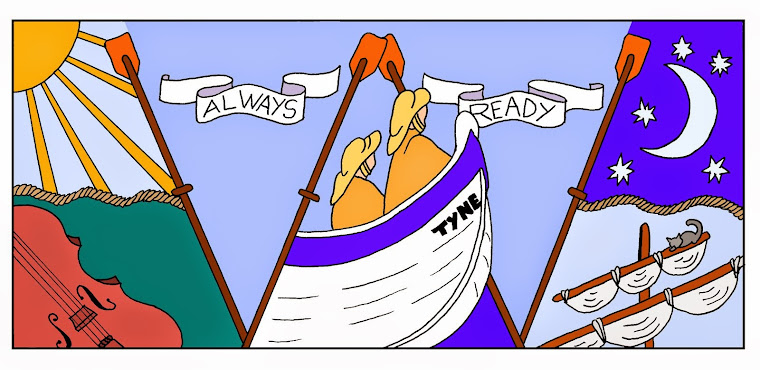Richard was discharged from the Royal Navy on 3rd
September 1792 (National Archives ADM 36/11231) and next appears in the records
of Christchurch, Tynemouth, which was the main church of North Shields at the
time. His father Richard (RI050) had
died in 1783 and was buried in Hull. His
widowed mother, Mary remarried in 1787 to William Mouatt. All three of Richard’s sisters had died young
and he had no brothers. Therefore it
seems that he had no strong family ties to Hull where he was born.
Richard’s family came originally from Newcastle and his
father’s uncle, Thomas (TH050), had moved to North Shields with his
family. Although Thomas died in 1747
there were a number of his children and their families settled in North Shields.
This may have been the reason why Richard settled in this area.
However, another reason could be that one of the Bounty crewmembers, Thomas McIntosh, who
sailed back to England as a prisoner from the Pandora, was born in North Shields (in 1759). Thomas signed on the Bounty as a carpenters mate; he was an unwilling mutineer, kept on
the Bounty for his carpentry skills
and remained on Tahiti when the mutineers split up. He settled in Tahiti taking a wife and
fathering a child. He was captured when
the Pandora arrived. He was acquitted of all charges at the
court-martial of the Bounty’s crew. However
there is no detail of where he went after the court-martial. Information about
the Bounty mutineers can be found on
the Fateful Voyage website.
 Although North Shields originated around 1225, it wasn’t
until the mid to late 1770s that it became a large and ever increasing sea
port. It had a large community of seamen
and a reputation for skilled boatmen. Therefore it would be an appropriate
place for Richard to settle.
Although North Shields originated around 1225, it wasn’t
until the mid to late 1770s that it became a large and ever increasing sea
port. It had a large community of seamen
and a reputation for skilled boatmen. Therefore it would be an appropriate
place for Richard to settle.
In 1793 Richard married Anne Whately in Christchurch,
Tynemouth on December 23rd.
The witnesses to the marriage were Mary Chapman and Luke John Wouldhave
(the son of Thomas (TH050), and therefore Richard’s second cousin). Luke John was born in North Shields in 1753,
the brother of William Wouldhave the inventor of the self-righting life boat –
see blog April 2015. Both were
apprenticed as ropemakers (Apprenticeship cards Tyne and Wear Archives) and
were Freemen of Newcastle.
Richard and Anne’s first child, Richard (RI101), was
christened on 30th November 1794 and a second child Mason was born
in November 1796. However Anne died following
the birth of Mason and was buried on November 18th 1796. The inscription
in Christchurch Tynemouth is given below;
“Sacred to the memory of Anne, the wife of Richard
Wouldhave of North Shields, mariner, who departed this life Nov 17 1796 aged 21
years. Also one of their children who died in infancy.”
After a couple of years, Richard married Eleanor Whately
in Wallsend on July 4th 1799, witnesses were Margret Cunningham and
Cath Ireland. Information from the parish records gives;
“The banns of marriage between Richard Wouldhave and
Eleanor Whately, both of the chapelry of Wallsend were published in the said
chapel June 9th, 16th and 23rd and no objections alleged. Richard Wouldhave and Eleanor Whately, both
of the chapelry of Wallsend were married in the said chapel. Richard signed and Eleanor made her mark . “
This does provide a puzzle;
·
Richard was clearly living in North Shields
while married to Anne, and it would appear that her parents were, or she was
closely related to, Mason and Jane Whatley since their second son was named
Mason.
·
We have not yet found the birth/christening of
Anne Whately in the registers of Christchurch, Tynemouth.
·
Eleanor Whately was christened in Christchurch,
on April 28th 1771, the daughter of Jane and Mason Whately, a
mariner.
·
According to the inscription on her burial, Anne
was born in 1775 or thereabouts.
·
Were Anne and Eleanor sisters or cousins, and
did this lead to the second marriage in a nearby parish where the previous
marriage was not known?
Further information on the Wouldhave families in North Shields
will follow in a later post.






